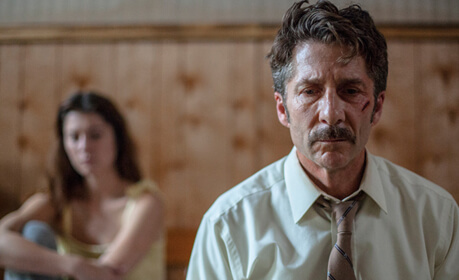Krzysztof Baginski in Michal Marczak’s “All These Sleepless Nights.” | THE ORCHARD
The 17th edition of “Film Comment Selects,” programmed by that magazine’s editors and writers, veers off in a new direction. Simultaneously, it looks toward the future (which seems to mean Eastern Europe, Latin America, and East Asia this year) and the past.
The opening night includes Terrence Malick’s 45-minute, music-free, ultra-widescreen version of his documentary “Voyage of Time.” Of the new films I didn’t have a chance to preview, I’m most curious about Chinese documentarian Wang Bing’s “Bitter Money” and Filipino director Lav Diaz’s “The Woman Who Left.” Both directors deserve to be better known in the US, although the length of most of their films has undoubtedly made this more difficult.
In festival focused on cinema’s future, Amat Escalante’s story about gay man’s attack stands out
“Film Comment Selects” pays tribute to the late cinematographer Raoul Coutard not by showing the Godard and Truffaut films that made his reputation but by gathering a group of films that are almost unknown in the US. It also pays tribute to Louis Malle, German director Doris Dörrie, and re-introduces us to Paul Newman’s work as a filmmaker (on a program including an anti-smoking short that hasn’t been screened in 50 years).
The winner of the Sundance Film Festival World Cinema Documentary direction prize, Polish director Michal Marczak’s “All These Sleepless Nights” does not appear to be an actual documentary despite that honor. However, part of its point seems to be making the spectator constantly wonder about the reality of what we’re watching. A tale of the shifting currents of friendship between two young men in Warsaw, “All These Sleepless Nights” takes place mostly at night and dawn.
Every character in it smokes cigarettes, and that’s just the start of the film’s depiction of substance use; next to “All These Sleepless Nights,” most films about young people look awfully sanitized. However, Marczak’s style doesn’t always fit his subject matter. He aims for a swooning romanticism, full of wide-angle Steadicam shots following and moving around his characters. This fits MDMA-fueled scenes of wandering around Warsaw at dawn, but feels a bit out of place when a character goes to buy a typewriter, even if he flirts with the woman selling it.
Youthful fireworks have been the subject of many great films, but “All These Sleepless Nights” aims for the drifting power of Richard Linklater’s “Dazed and Confused” or Olivier Assayas’ “Cold Water” without reaching it.
Amat Escalante’s “The Untamed” could well establish the Mexican director among American audiences. | YOUTUBE.COM
Until now, Mexican director Amat Escalante has perhaps been best known for making a film with a convincing scene in which a penis is set on fire. I think that will change with his latest film, “The Untamed,” but it doesn’t have an American distributor yet. “The Untamed” catapults him to the ranks of Latin American fantasists like Carlos Reygadas and Lisandro Alonso, with distant echoes of New French Extremity. (It’s no surprise that Gaspar Noé gets thanked in the end credits.)
Yet for all the explicit sex (gay, heterosexual, animal, and woman with tentacled monster), violence (less overt but constantly menacing), and weirdness, “The Untamed” also has a grasp of ordinary family life. The film revolves around a gay nurse who gets beaten into a coma; the female protagonist’s homophobic husband, who happens to be having an affair with him, is the main suspect.
“The Untamed” has a constantly shifting sense of color, starting with blue shades and shifting to red and yellow as the film grows darker. It’s rare and welcome to see a film mix elements of the paranormal with such a fine grasp on the drama of everyday life.
A scene from Bogdan Mirica’s “Dogs.” | FILMLINC.ORG
Romanian director Bogdan Mirica’s “Dogs” tries a synthesis of elements of American genre cinema — film noir, Westerns, even horror films — with a meditative quality that seems very European, as if Andrei Tarkovsky had directed the script for the Coen brothers’ “No Country For Old Men.” The mixture never quite gels.
The narrative seems to take most of the film getting underway — more than a hour goes by before a climactic, menacing BBQ scene establishes the theme of conflict between urban and rural Romanians. Mirica does have an eye for long shots of arid landscapes and drying greenery. The title refers to a mangy, angry dog who seems to have the same personality as most of the people around her.
Roman (Dragos Bucur) has inherited a patch of land near the Black Sea, which he plans to sell off; unfortunately, he soon gets tangled in the village’s conflicts, and getting away quickly seems like his best option. While there are elements in “Dogs” that are familiar from earlier Romanian New Wave films, like a dry sense of humor, it attempts something new. Unfortunately, Mirica’s storytelling skills and pacing both need some work.
FILM COMMENT SELECTS | Film Society of Lincoln Center, 144 & 165 W. 65th St. | Feb. 17-23 | Tickets, schedule at filmlinc.org





































